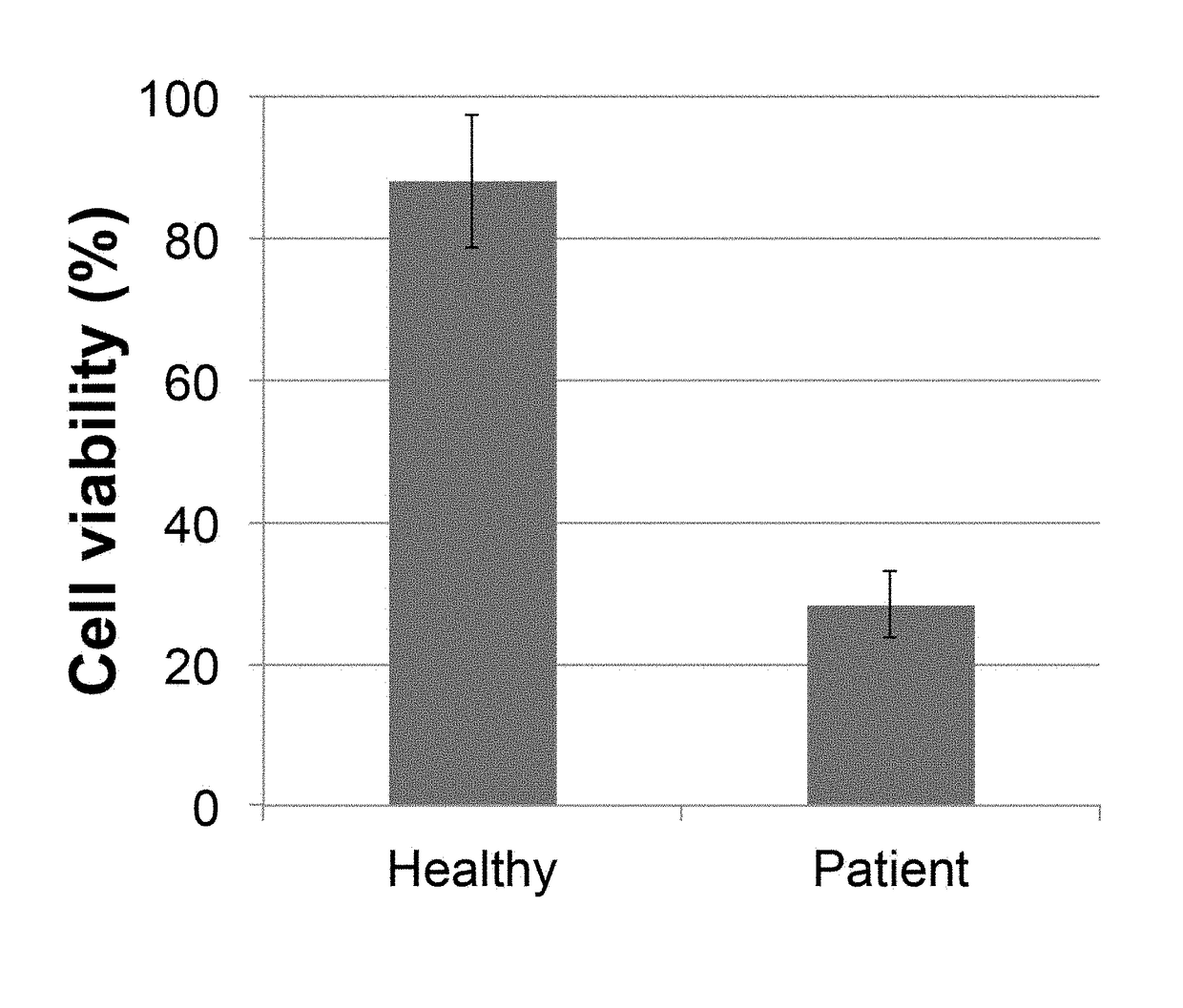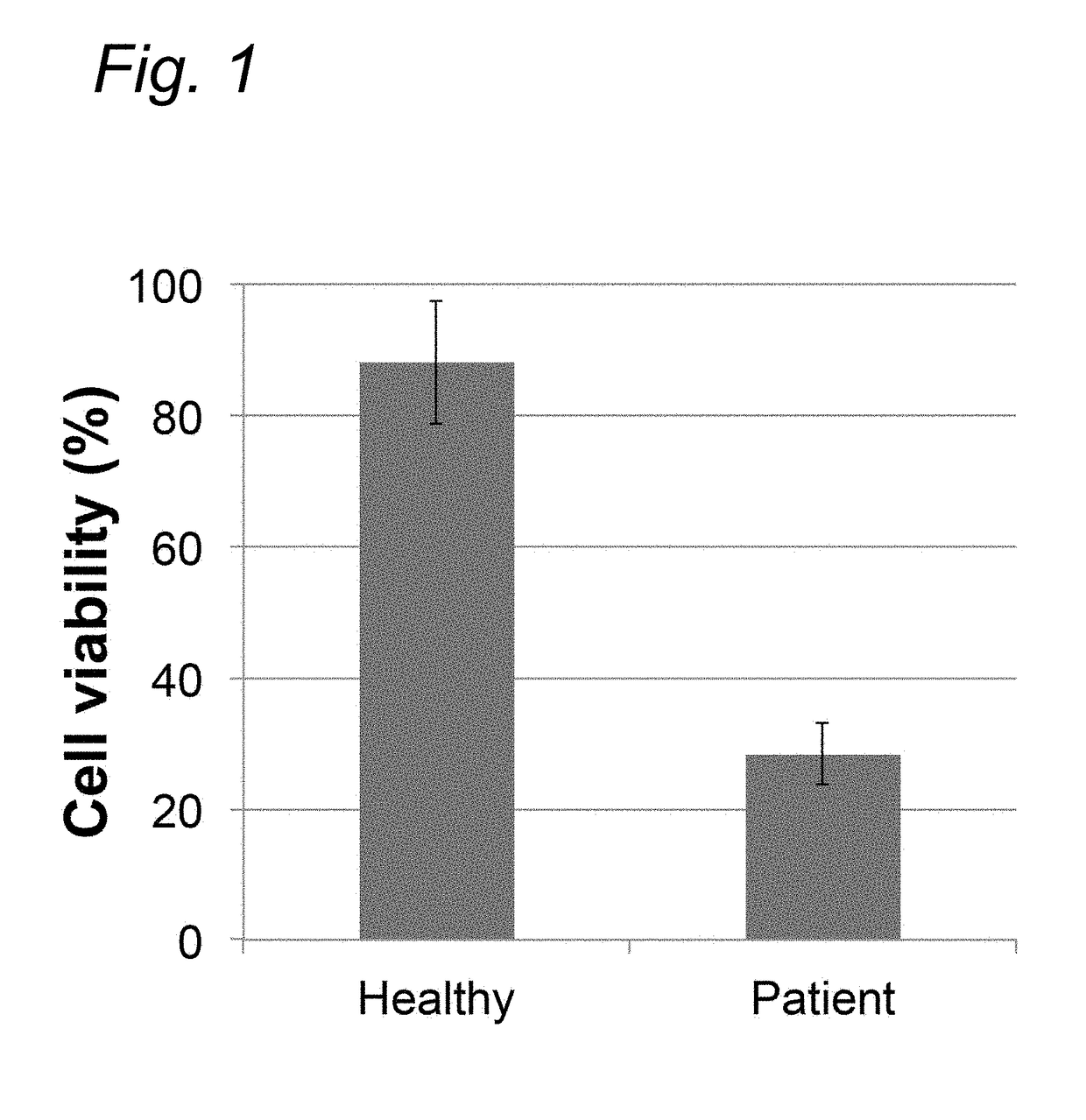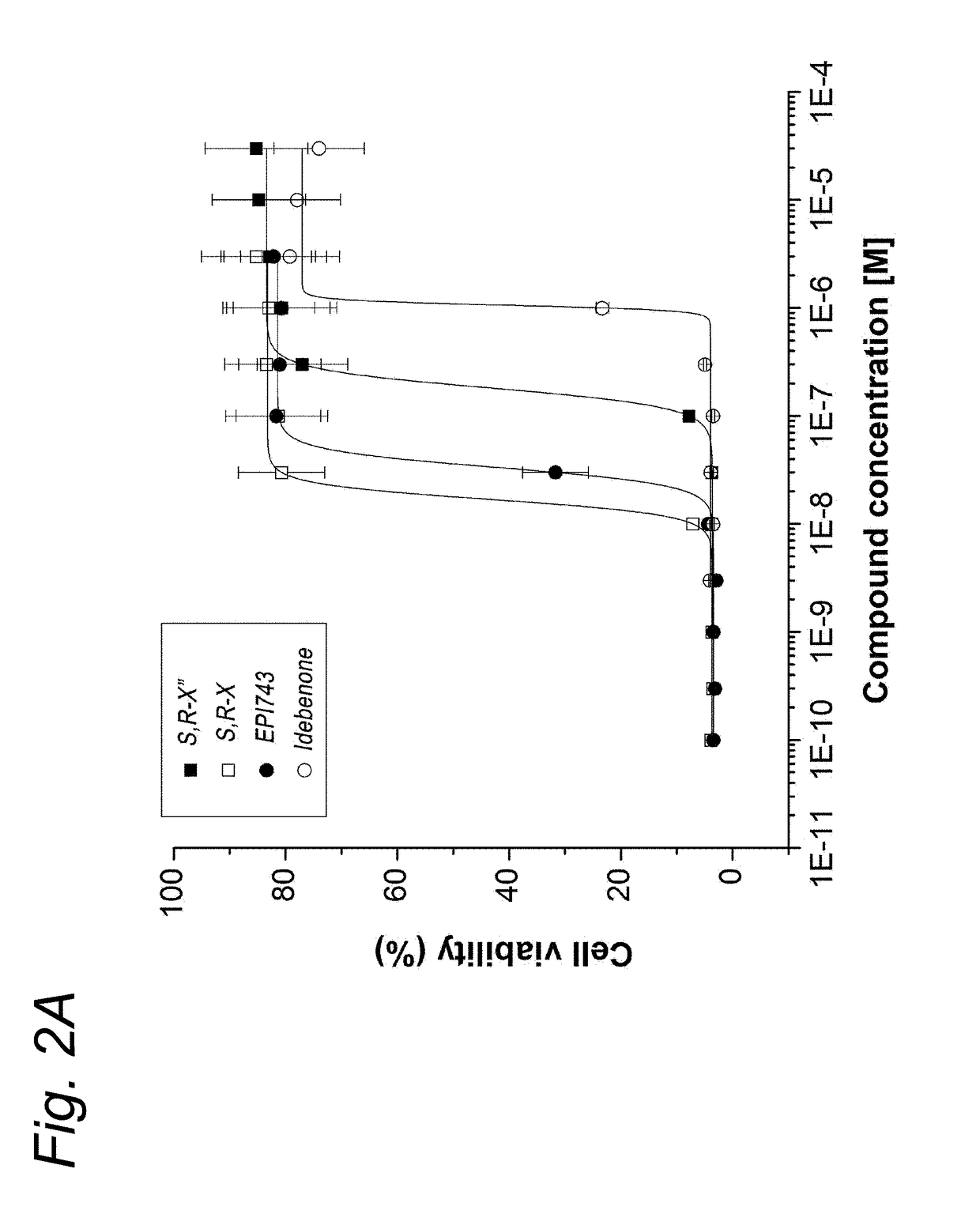Novel compounds for treating mitochondrial disease
a mitochondrial disease and compound technology, applied in the field of human and animal diseases and cosmetics, can solve the problems of oxidative stress, affecting the organs of a variety of severe metabolic disorders, and significant damage to cell structures, and achieve the effects of reducing ros level, increasing or lowering ros level, and treating, preventing or suppressing symptoms
- Summary
- Abstract
- Description
- Claims
- Application Information
AI Technical Summary
Benefits of technology
Problems solved by technology
Method used
Image
Examples
example 1
of the Compounds
[0254]Synthesis of the compounds according to the invention was performed by first preparing the closed chroman derivative of general structure (II). These closed-form derivatives of the compounds according to the invention are designated with an superscript II. For example, the closed form of compound T as defined above is referred to as compound TII. Compounds of general structure (II) are prepared according to WO 2014 / 011047.
[0255]Unless noted otherwise, materials were purchased from commercial suppliers and used as received. CH2Cl2 (DCM) was freshly distilled from calcium hydride. All air and moisture sensitive reactions were carried out under an inert atmosphere of dry nitrogen. Column chromatography was performed using Acros silica gel (0.035-0.070 mm, 6 nm).
[0256]GENERAL PROCEDURE A for the EDCI / HOAt coupling of amines to Trolox™: To a mixture of Trolox™ (1 eq) and amine (1 eq) in DMF (dry, ˜0.2M) under nitrogen atmosphere were added EDCI.HCl (1.1 eq) and HOAt...
example 2
the Compounds on Oxidative Stress-Induced Cell Death
[0260]Methods: To assess the ability of the compounds to protect patient cells against oxidative stress-induced cell death an assay was established using stressed primary human fibroblasts derived from a Complex-I deficient patient. Utilizing the inherent oxidative stress of fibroblasts from patients with mitochondrial disease, their oxidative burden was further increased by depleting cellular glutathione with an inhibitor of glutathione synthesis, L-buthionine-(S,R)-sulfoximine (BSO). As a result, while fibroblasts from healthy individuals retained full viability, patient fibroblasts exhibited complete cell death within 48 h of the BSO insult (200 μM) (FIG. 1).
[0261]Cells were seeded at a density of 3000 cells / well in a 96-well format plate and incubated with increasing concentrations of compounds in combination with BSO (200 μM, Sigma-Aldrich). Two days after treatment, the cells were washed twice and stained with a solution of 5...
example 3
the Compounds on Cellular ROS Levels
[0266]Methods: CM-H2DCFDA is a cell-permeable reporter molecule for reactive oxygen species (ROS) that is converted into non-fluorescent and membrane-impermeable CM-H2DCF following removal of its acetate groups by intracellular esterases. Upon oxidation by ROS, CM-H2DCF is converted into fluorescent CM-DCF. It is widely accepted that a wide variety of ROS can be responsible for the CM-H2DCF oxidation, making it a suitable reporter of cellular oxidant levels. The average cellular CM-DCF fluorescence intensity is considered an indirect measure of cellular ROS levels.
[0267]The effect of the compounds on the intracellular ROS levels was measured in response to an induction of ROS by hydrogen peroxide. Primary human fibroblasts derived from a patient with mitochondrial disease were seeded at a density of 2500 cells / well in a 96-well format plate. The following day, the culture medium was replaced with 100 μl M199 medium without FBS and phenol red and c...
PUM
| Property | Measurement | Unit |
|---|---|---|
| partition coefficient | aaaaa | aaaaa |
| cyclic structure | aaaaa | aaaaa |
| mitochondrial morphology | aaaaa | aaaaa |
Abstract
Description
Claims
Application Information
 Login to View More
Login to View More - R&D
- Intellectual Property
- Life Sciences
- Materials
- Tech Scout
- Unparalleled Data Quality
- Higher Quality Content
- 60% Fewer Hallucinations
Browse by: Latest US Patents, China's latest patents, Technical Efficacy Thesaurus, Application Domain, Technology Topic, Popular Technical Reports.
© 2025 PatSnap. All rights reserved.Legal|Privacy policy|Modern Slavery Act Transparency Statement|Sitemap|About US| Contact US: help@patsnap.com



